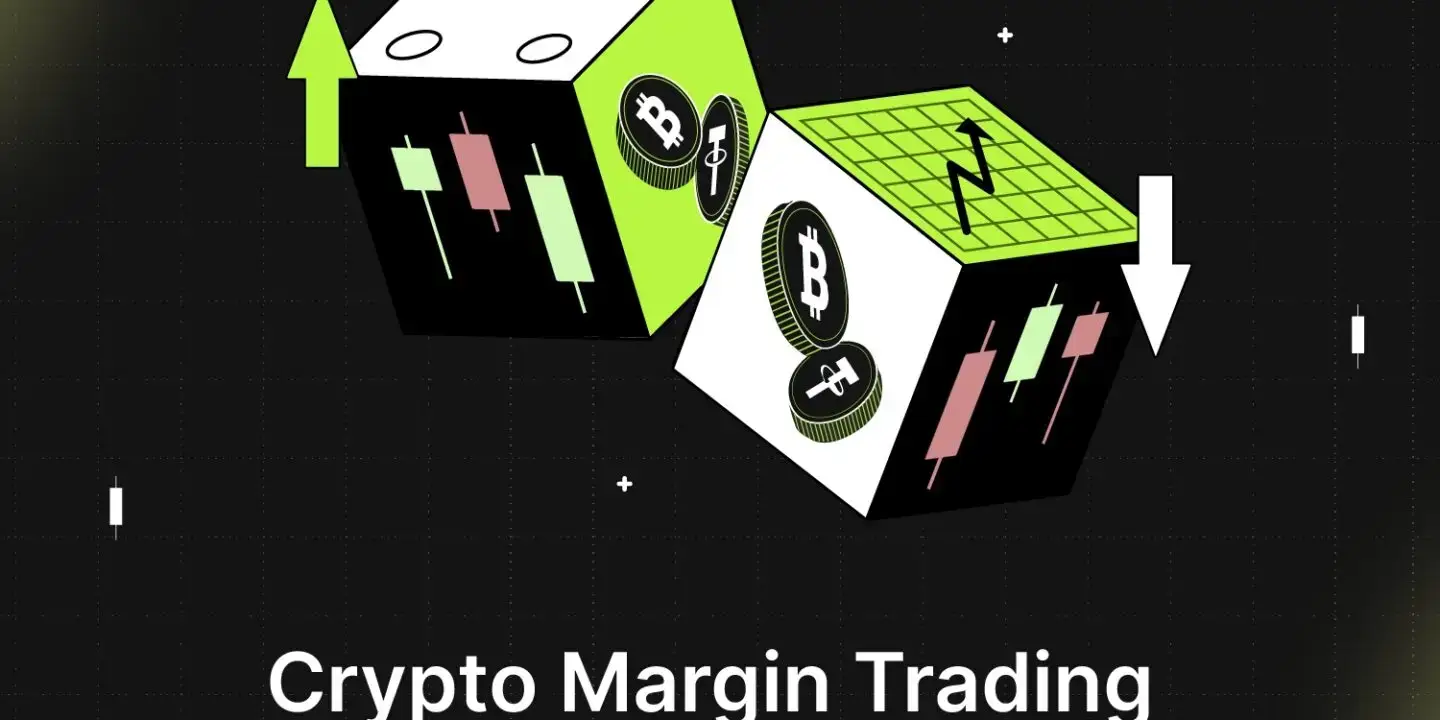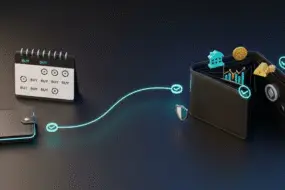
Crypto trading has grown significantly in the past decade, and one of the advanced methods that traders use to maximize potential profits is margin trading. What is crypto margin trading? It allows traders to borrow funds from an exchange to open positions larger than their own capital would normally permit. While this can magnify gains, it also increases the risk of substantial losses.
This guide provides a detailed overview of cryptocurrency margin trading, including its mechanics, benefits, risks, strategies, and best practices. It also examines how margin trading crypto exchanges such as Bitunix operate and what traders should know before starting.
What is Margin Trading?
- Margin trading means borrowing funds from an exchange to increase market exposure.
- Leverage is the borrowed capital.
- Margin is the trader’s deposit that acts as collateral.
Example: Abdul borrows money from Kyler to buy an iPhone 15 Pro Max. To secure repayment, Kyler takes Abdul’s MacBook Pro as collateral. If Abdul cannot repay, Kyler keeps the laptop. In this case, Abdul’s laptop is the margin, while the borrowed money represents the leverage.
This shows how margin provides security while leverage increases exposure.
What is Leverage in Crypto Margin Trading?
- 10x leverage: $2,000 deposit controls $20,000.
- Shown as ratios: 5:1, 10:1, 100:1.
- Magnifies profits and losses.
Leverage amplifies trading outcomes. A small initial investment can control much larger positions, but this comes with heightened risk. Beginners are advised to start with lower leverage levels to avoid liquidation from minor price movements.
Leverage magnifies both potential profits and losses.
While it can increase the potential returns on successful trades, it also increases the risk of significant losses if the market moves against your position. It’s important to use leverage wisely and to have a solid risk management strategy in place to mitigate potential losses.

What is Margin in Cryptocurrency Trading?
- Initial margin: The deposit required to open a leveraged trade.
- Percentage-based: Exchanges define requirements as a percentage of trade value.
- Collateral purpose: Ensures borrowed funds are secured.
Margin represents the capital a trader risks when borrowing funds. It safeguards the exchange, but also determines how much leverage a trader can access.
Mechanics of Margin Trading
How Does a Crypto Margin Account Work?
- Open and verify a margin account on a crypto exchange.
- Deposit funds to serve as your margin.
- Agree to terms and conditions specific to leveraged trading.
- Borrow funds based on leverage ratios.
- Enter trades by going long or short.
A margin account differs from a spot account because it enables borrowing. It provides expanded opportunities but requires strict attention to requirements and risks.
For you to start margin trading, you must open a margin account with a cryptocurrency exchange like Bitunix that offers this service. This account is different from a regular trading account as it allows the investor to borrow money from the exchange to trade.
The process typically involves registration and verifying an account on the exchange, afterwards you deposit funds into the margin account. This initial deposit will serve as the margin for leveraged trades. Also, don’t forget to read and agree to the terms and conditions of margin trading provided by the exchange, the disclaimer rules and all of that.
Once the margin account is funded, traders can borrow funds from the exchange to increase their trading position. The amount that can be borrowed depends on the leverage ratio offered by the exchange and the trader’s initial margin.
How Does Trading with Leverage Work?
- Going Long: Buying a cryptocurrency expecting its price will increase.
- Going Short: Selling a cryptocurrency not owned, planning to repurchase at a lower price.
Leverage allows profits in both bullish and bearish conditions. However, in countries such as the United States, leveraged spot trading is restricted. Traders there often use derivatives like futures or options to achieve similar exposure.
Traders can use the borrowed funds to buy (go long) or sell (go short) cryptocurrencies. Going long means buying a cryptocurrency with the expectation that its price will rise. Going short involves selling a cryptocurrency that the trader does not own, intending to buy it back at a lower price to profit from the price decline.
Due to the inherent risks that comes with margin trading, trading with leverage is not for newbie crypto traders. Many countries have rules and jurisdictions that brokers, exchanges, and other financial services firms must adhere to that dictate who can trade with leverage, and what types of assets are eligible for this type of trading.
In the US for instant, spot trading of cryptocurrencies using leverage is prohibited for most investors. However, there are other ways for traders to get access to crypto while trading with leverage, with the most popular way being trading crypto derivatives, such as futures and options.
While trading with leverage can provide increased buying power and enhanced returns, it is also important to keep in mind that it also magnifies the potential losses and increases the risk of your position. Educate yourself on the market and the terms and conditions associated with any offered leverage before making a trade.

What is a Maintenance Margin and Margin Call?
- Maintenance margin: Minimum equity required in a margin account.
- Margin call: Triggered when the balance drops below the threshold.
- Liquidation: Occurs if additional funds are not deposited.
This system protects exchanges from losses, but it means traders must closely monitor positions. Sudden price moves can quickly lead to liquidation.
The maintenance margin is the minimum amount of equity that must be maintained in the margin account. If the account balance falls below this threshold due to adverse price movements, the exchange may issue a margin call, requiring the trader to deposit additional funds to bring the account back to the required level. If the trader fails to meet the margin call, the exchange may liquidate the trader’s position to cover the borrowed funds.
It is the amount of money needed in your account at any given time in order to maintain an open position. If the traders funds drops below the maintenance margin, your position(s) can be liquidated. Maintenance margins are typically lower than initial margins, however the exact amount can vary as it is set by the exchange.
What is the Difference Between Isolated Margin and Cross Margin?
- Isolated Margin: Each trade is allocated its own margin. Losses are limited to that trade.
- Cross Margin: Margin is shared across all trades, with profits and losses affecting the whole account.
Isolated margin offers more control, while cross margin provides flexibility. Traders choose depending on their strategy and risk management approach.
Isolated margin and cross margin are two distinct modes to managing margin positions in margin trading, each with its own advantages and considerations as discussed in our recent article.
In isolated margin trading, each trading position is separated or isolated from the rest of the trader’s funds. This means that the margin allocated to a particular trade is restricted to that trade alone, and losses incurred in one position do not affect the margin or positions in other trades.
In cross margin trading, the margin allocated to a trader’s account is shared across all of their open positions. This means that the entire account balance, including profits and losses from all trades, is used as collateral for all open positions.
Isolated margin is generally considered to offer better risk management, as losses are contained within individual positions. In addition, traders have more flexibility in managing their margin set aside, as they can choose the amount of leverage to apply to each individual trade independently.
Cross margin, on the other hand, allows traders to spread risk across multiple positions. Profits from one trade can offset losses from another, potentially reducing the impact of unfavourable price movements.
What Are the Pros of Crypto Margin Trading?
- Amplified profits. Small deposits can generate larger returns.
- Diversification. Multiple positions can be held at once.
- Market opportunities. Traders can benefit from both rising and falling markets.
Margin trading offers significant opportunities for growth. By amplifying exposure, traders can profit in volatile conditions. However, every benefit comes with increased risk.
What Are the Cons of Crypto Margin Trading?
- Magnified losses. Small adverse moves can exceed initial investments.
- Margin calls and liquidation. Positions may be closed if requirements are not met.
- Borrowing costs. Interest accumulates over time.
- High volatility risk. Sudden swings make crypto particularly risky.
These drawbacks mean that margin trading is best suited for experienced traders who can manage risk effectively.
What Strategies Can Traders Use in Crypto Margin Trading?
- Long Strategy: Buy with leverage to profit from rising prices.
- Short Strategy: Sell borrowed assets to profit from falling prices.
- Stop-Loss Orders: Limit potential losses by closing positions automatically.
- Take-Profit Orders: Secure profits at predefined levels.
These strategies form the foundation of leveraged trading. They balance opportunities with risk controls, ensuring traders can manage exposure in volatile conditions.
Margin trading allows traders to take both long and short positions thereby buying a cryptocurrency with the expectation that its price will rise. For example, if a trader believes Bitcoin’s price will increase, they can use leverage to buy more Bitcoin, amplifying potential gains if the price rises.
In addition to buying the asset, traders can also Sell a cryptocurrency that they do not own, aiming to buy it back at a lower price. For example, if a trader expects Ethereum’s price to fall, they can use leverage to sell Ethereum, profiting from the price decline.
To manage risk and lock in profits, traders can also use stop-loss and take-profit orders: Stop-Loss Order is sn order to sell a cryptocurrency when its price reaches a specified level, limiting potential losses. This helps protect the trader’s account from significant losses in volatile markets. Traders can also set a take-profit order which is an order to sell a cryptocurrency when its price reaches a predetermined level, securing profits. This ensures that gains are realized before market conditions change.
Risk Management
Effective risk management is crucial for successful margin trading. Through determining the appropriate size of each trade based on the trader’s risk tolerance and account balance. Smaller positions reduce the impact of adverse price movements.
Also using appropriate leverage levels that align with the trader’s experience and risk tolerance. Higher leverage increases both potential profits and risks. A trader can also spread investments across multiple cryptocurrencies to reduce the impact of poor performance in a single asset.
What Are the Best Practices for Margin Trading?
- Study the mechanics of margin trading before using it.
- Start small with low leverage and small positions.
- Always use stop-loss and take-profit orders.
- Diversify across multiple assets.
- Stay updated on market events that influence crypto prices.
- Practice strategies in simulations before trading real funds.
By following these practices, traders can gradually build skills while minimizing risks associated with leverage.
Before engaging in margin trading, it is essential to educate yourself about the mechanics, risks, and strategies involved. Comprehensive knowledge and understanding of the market can help mitigate risks and improve trading outcomes.
For beginners, it is advisable to start with small positions and low leverage levels. This approach allows traders to gain experience and understand the dynamics of margin trading without exposing themselves to excessive risk.
Utilize risk management tools such as stop-loss and take-profit orders to protect your account from significant losses and secure profits. These tools can help manage risk effectively and reduce the emotional stress of trading.
You should also stay informed about market conditions, news, and events that can impact cryptocurrency prices as crypto currency are mostly govern by fundamentals. Regularly monitoring the market can help identify potential trading opportunities and avoid adverse situations. To reduce the risk involved many exchanges offer demo accounts that allow traders to practice margin trading with virtual funds. Using a demo account can help traders develop their skills and strategies without risking real money.
Which Crypto Margin Trading Platforms Are Popular?
| Platform | Maximum Leverage | Key Features |
| KuCoin | Up to 100x | Wide asset selection, moderate liquidity |
| BingX | Up to 150x | Social trading features, moderate execution |
| Bitunix | Up to 125x | Deep liquidity, efficient execution, global expansion |
These platforms are widely used for cryptocurrency margin trading. Bitunix offers up to 125x leverage, emphasizing liquidity and efficient execution, while KuCoin and BingX provide competitive alternatives with varying features.
Conclusion
Cryptocurrency margin trading offers traders the opportunity to amplify profits, diversify strategies, and trade in both bullish and bearish markets. However, it also comes with substantial risks, including liquidation, margin calls, and amplified losses.
By understanding leverage, margin requirements, and platform mechanics, traders can use margin trading effectively. It should always be approached with caution, proper risk management, and continuous learning. For those who prepare well, margin trading remains a powerful tool in the fast-paced world of crypto assets.
FAQ
What is crypto margin trading and why use leverage?
It is a method of trading that involves borrowing funds from an exchange. Leverage enables larger trades with smaller deposits, potentially increasing profits but also magnifying risks.
How do cryptocurrency margin trading platforms operate?
They allow traders to borrow funds, require margin collateral, and liquidate positions if equity falls below maintenance levels.
How can I practice margin trading without risking real funds?
Bitunix Academy provides educational resources where traders can test strategies in a risk-free environment before committing capital.
What is Bitunix leverage and how does it work?
Bitunix offers leverage of up to 125x. For every $1 deposited, traders can control $125 in trades.
How does Bitunix compare with other margin trading crypto exchanges?
Bitunix emphasizes liquidity and efficient execution. While KuCoin and BingX also provide margin trading, Bitunix offers competitive leverage and global expansion plans.
Can beginners use crypto margin trading?
Yes, but beginners should start with small positions and low leverage to limit risk.
What happens if a trader loses on a margin trade?
If losses exceed the trader’s margin balance, the exchange will liquidate the position to protect borrowed funds.
About Bitunix
Bitunix is one of the world’s fastest growing professional derivatives exchanges, trusted by over 3 million users across more than one hundred countries. Ranked among the top exchanges on major data aggregators, Bitunix processes billions in daily volume and offers a comprehensive suite of products including perpetual futures with high leverage, spot markets, and copy trading. Users can trade bitcoin and other major cryptocurrencies on the platform, taking advantage of advanced trading features. Known for its Ultra K line trading experience and responsive support, Bitunix provides a secure, transparent, and rewarding environment for both professional and everyday traders. Bitunix Academy adds structured lessons so you can build skills while you trade.
Bitunix Global Accounts
X | Telegram Announcements | Telegram Global | CoinMarketCap | Instagram | Facebook | LinkedIn | Reddit | Medium
Disclaimer: Trading digital assets involves risk and may result in the loss of capital. Always do your own research. Terms, conditions, and regional restrictions may apply.









